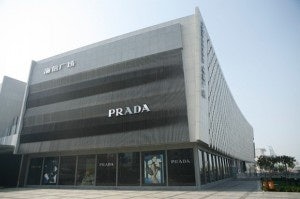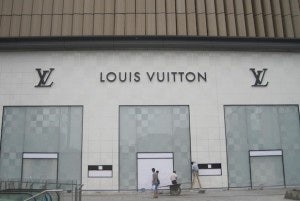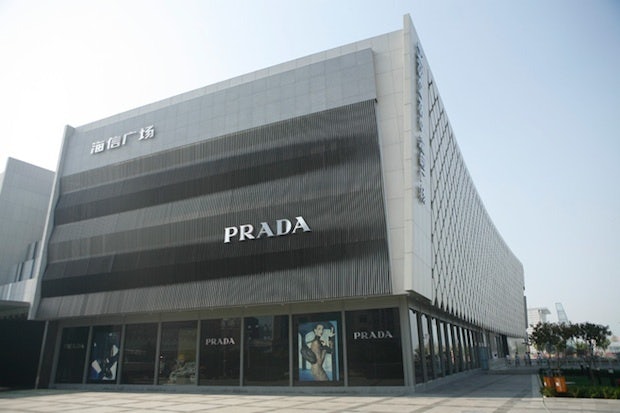"Brands Should Fuse Health & Beauty Benefits In Their Branding"#

With a heavy-spending affluent class and a rising middle class that could surpass that of the US by 2025, China’s second-, third-, and now fourth-tier cities are primed for the next wave of luxury consumption. This week, a new study by Ogilvy & Mather China’s consumer insights and trends team, Discovery, confirms that lower-tier cities should be anything but low on brands' lists of China priorities. According to the “China Beyond – Change & Continuity” study, it is now crucial for brands to retool branding and marketing strategies to account for growing consumer confidence, brand awareness, digital literacy and demand in China's lower-tier cities.
With 200 million households now part of China's consumer classes, second- to fourth-tier cities present brands with both massive opportunity and infuriating challenges, with consumers there at once able to spend yet stubbornly tight-fisted. In 2011, second- to fourth-tier cities in China had combined disposable income of around 8 trillion yuan (US$1.28 trillion), compared to 1 trillion yuan ($160.5 billion) in first-tier cities, a fact not lost on advertisers, who spent more than four times as much in tier two and three cities than in top-tier cities, according to Ogilvy & Mather.
[China Beyond – Change & Continuity] finds that while some constants remain, a lot of change has occurred as well. While traditional values such as family ties remain intact, a new breed of youth has emerged who do not necessarily wish to abide by their families’ expectations. Spurred by job creation, the availability of high quality housing and education, and a relaxed pace of life, the first wave of reverse migration is now in full swing – particularly those who migrated to Beijing, Shanghai and Guangzhou a decade ago and have now realized that after years of hard work, they are still unable to afford homes, cars or their child’s education.
With these interests at heart, shoppers are embracing e-commerce with enthusiasm and snapping up deals on products that are unavailable in their local stores. Alibaba's Tmall, a hugely popular e-commerce platform for local and international brands to sell in mainland China, have rendered bigger brands as more accessible to these lower tier consumers. These lowertier Residents are hungry for new experiences and have time at their leisure, so that local businesses able to can often occupy these consumers for hours.
“China’s lower-tier settings are no longer a world away,” said Shenan Chuang, CEO of O&M Greater China. “The changes in the consumer landscape are driven by the expansion of the Internet and other digital innovations that have allowed Chinese consumers to be much more cognizant of the world outside their cities or towns than they once were, even if they’ve never migrated themselves.”

Among the findings of the study are that:
1.)
Key concerns of Chinese consumers remain food safety, pollution, and rising property and healthcare costs#
. Brands are tapping into these concerns by marketing items as "ecologically safe" or natural, though consumers remain skeptical.
2.)
Young people are trying to make a difference in their communities#
. Social media "has given this generation the means to express themselves, especially in smaller cities where the youth have few other channels available for expression, they are now much more outspoken with usually very emotional responses to current events."
3.) Lower-tier residents "
believe that their towns are less polluted, offer a more relaxed lifestyle, lower living costs, smoother public transportation and higher public security#
." Tier 3/4 residents are more interested in become entrepreneurs, while those in second-tier cities are more apt to prefer stable government or SOE (state-owned enterprise) jobs.
4.)
Seasonality in buying trends extend beyond Chinese New Year#
. Seasonal gifting is taking place at different times in the year, including when young students leave home to start university or military training. Chinese retailers have created their own version of "Cyber Monday," which takes place on November 11 -- "Singles' Day" -- which saw lower-tier consumers spend billions on discounted items in 2012.
5.)
Lower-tier consumers are big on open spaces#
. Newly built parks, scenic spots, and shopping malls give residents in these cities room to meet up with friends and family.
6.)
Counterfeit brands are trying to go upscale#
, moving from cheap consumer goods to copycat brands in their own right. Among the brands called out in the study are "Hiyatt (a fake Hyatt) and Marvelot (a fake Marriott) as well as counterfeit fashion brands such as Jack Walk (right next door to a real Jack Jones) and SSquared (a fake D-Squared)."
7.) The mobile Internet is king, yet lower-tier consumers still wary about e-commerce. Younger tech-savvy Chinese are using apps like Tencent QQ rather than sending text messages, aggressively comparing prices before making purchases, and are less brand-loyal to digital devices than their top-tier counterparts. While these consumers may find e-commerce convenient, "many are uncertain about the quality of their purchases and seek guidance from trusted sources within their wider social circles."
In addition, the study highlights the fact that lower-tier consumers in China remain highly local and proud of it. However, as Kunal Sinha, Chief Knowledge Officer of O&M China, points out, these consumers remain proud of their hometowns, they're increasingly embracing modernity in terms of apparel, entertainment and food. So how can brands take advantage of the rising lower-tier consumer class and convince them to spend? The study puts forth five main recommendations:

1.)
Fuse health and beauty benefits in branding#
. Reassure consumers that items like beauty or food products are safe and healthy.
2.)
Involve the local community#
in public sanitation drives, organizing clean neighborhood contests with support from the local government. Corporate social responsibility is key.
3.)
Position tech brands around themes of empowerment#
, connectivity, and intelligence, giving lower-tier consumers the feeling that they have the same opportunities as those in higher-tier cities.
4.)
Recruit and educate online connectors#
to become a brand’s champion. Keep them up-to-date on product and company news, and train them on effectively using digital platforms like Weibo, WeChat or blogs in order to instill confidence in audiences.
5.)
Build the short-distance travel destination market#
, enabled by bus and car travel. Give residents ideas for creating interest groups centering around camping, cycling, hiking, fishing, etc.
